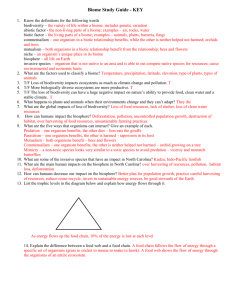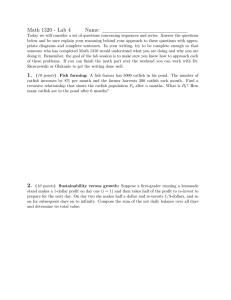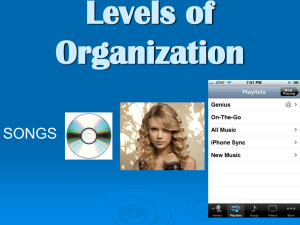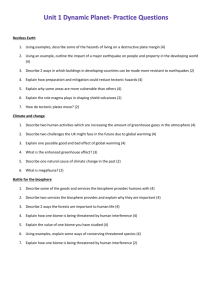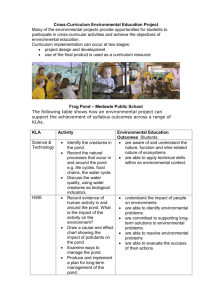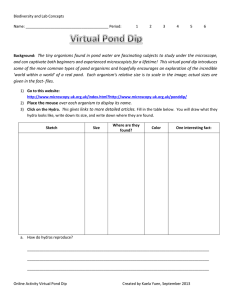Levels of Organization
advertisement
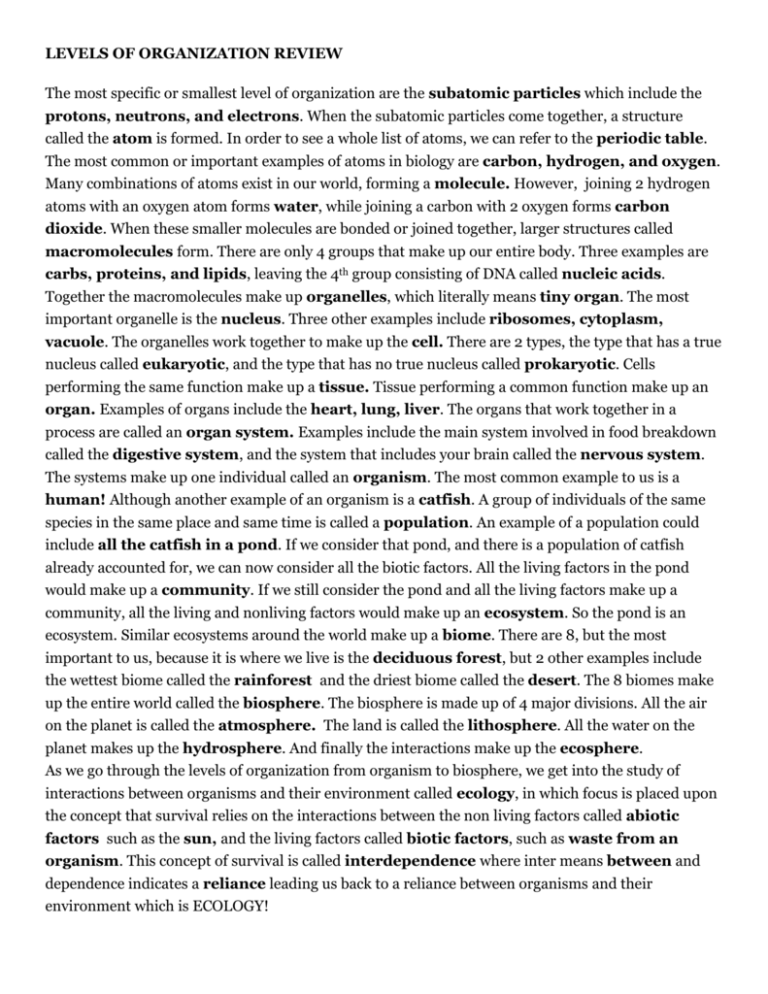
LEVELS OF ORGANIZATION REVIEW The most specific or smallest level of organization are the subatomic particles which include the protons, neutrons, and electrons. When the subatomic particles come together, a structure called the atom is formed. In order to see a whole list of atoms, we can refer to the periodic table. The most common or important examples of atoms in biology are carbon, hydrogen, and oxygen. Many combinations of atoms exist in our world, forming a molecule. However, joining 2 hydrogen atoms with an oxygen atom forms water, while joining a carbon with 2 oxygen forms carbon dioxide. When these smaller molecules are bonded or joined together, larger structures called macromolecules form. There are only 4 groups that make up our entire body. Three examples are carbs, proteins, and lipids, leaving the 4th group consisting of DNA called nucleic acids. Together the macromolecules make up organelles, which literally means tiny organ. The most important organelle is the nucleus. Three other examples include ribosomes, cytoplasm, vacuole. The organelles work together to make up the cell. There are 2 types, the type that has a true nucleus called eukaryotic, and the type that has no true nucleus called prokaryotic. Cells performing the same function make up a tissue. Tissue performing a common function make up an organ. Examples of organs include the heart, lung, liver. The organs that work together in a process are called an organ system. Examples include the main system involved in food breakdown called the digestive system, and the system that includes your brain called the nervous system. The systems make up one individual called an organism. The most common example to us is a human! Although another example of an organism is a catfish. A group of individuals of the same species in the same place and same time is called a population. An example of a population could include all the catfish in a pond. If we consider that pond, and there is a population of catfish already accounted for, we can now consider all the biotic factors. All the living factors in the pond would make up a community. If we still consider the pond and all the living factors make up a community, all the living and nonliving factors would make up an ecosystem. So the pond is an ecosystem. Similar ecosystems around the world make up a biome. There are 8, but the most important to us, because it is where we live is the deciduous forest, but 2 other examples include the wettest biome called the rainforest and the driest biome called the desert. The 8 biomes make up the entire world called the biosphere. The biosphere is made up of 4 major divisions. All the air on the planet is called the atmosphere. The land is called the lithosphere. All the water on the planet makes up the hydrosphere. And finally the interactions make up the ecosphere. As we go through the levels of organization from organism to biosphere, we get into the study of interactions between organisms and their environment called ecology, in which focus is placed upon the concept that survival relies on the interactions between the non living factors called abiotic factors such as the sun, and the living factors called biotic factors, such as waste from an organism. This concept of survival is called interdependence where inter means between and dependence indicates a reliance leading us back to a reliance between organisms and their environment which is ECOLOGY!

